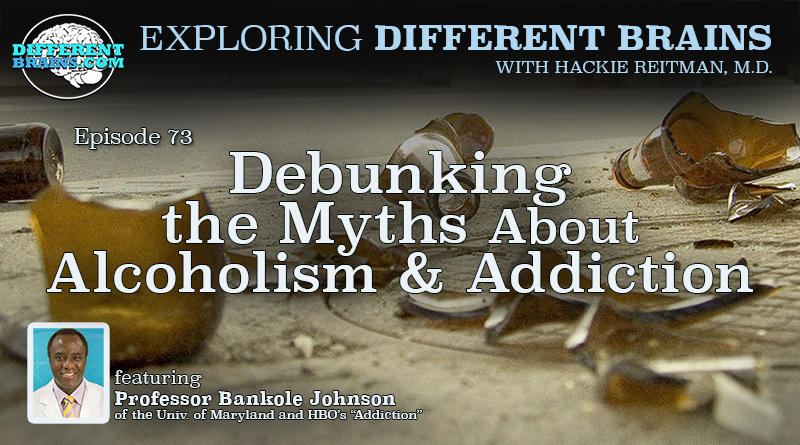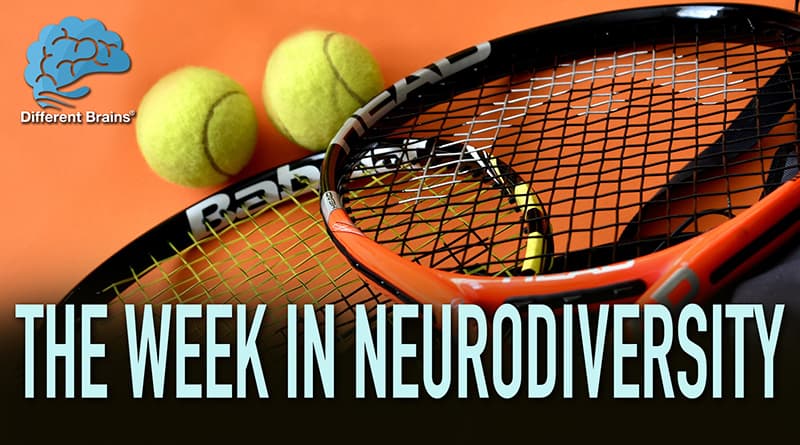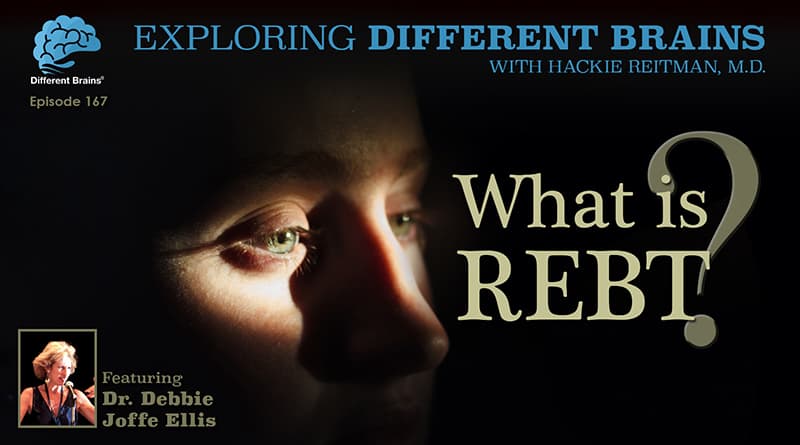Pursuing Dreams on the Autism Spectrum, with Dr. Sreenath Jagannathan | EDB 217

Autism self-advocate Dr. Sreenath Jagannathan discusses how he is pursuing his dream of being a neuroradiologist.
(22 minutes) Dr. Sreenath Jagannathan is a Baltimore, Maryland based autism self-advocate. He is a graduate of Lake Erie College of Osteopathic Medicine, and is pursing a career in neuroradiology and neuroanatomy. He is also dedicated to Sudarshana Kriya structured self-care breathing, yoga, mindfulness, meditation, and neurosensory musical modulating healing arts. For more on Dr. Jagannathan, visit his LinkedIn page: linkedin.com/dr-sreenath-jagannathan
AUDIO PODCAST VERSION:
Or look for us on your favorite podcast provider:
iTunes | Stitcher | SoundCloud
FULL TRANSCRIPTION
Introducing Dr. Sreenath Jagannathan
DR HACKIE RETIMAN (HR): Hi, I’m Dr. Hackie Reitman. Welcome to another episode of “Exploring Different Brains”. And Dr. Sreenath Jagannathan is with us today, and Sree thanks for taking the time to come to this issue of “Exploring Different Brains”.
DR SREENATH JAGANNATHAN (SJ): It’s an honor.
HR: The honor is all ours. Why don’t you introduce yourself properly to our Different Brains audience?
SJ: Well, I am Doctor Sreenath Jagannathan. I graduated Medical school in Erie Pennsylvania, Lake Erie College of Osteopathic Medicine. And I was the class of 2017. I was born with a lot of passion for music, singing, and wanting to explore special concrete logical interests so to speak. I was always interested in the weather, always interested in, you know, being on TV in the morning announcements in grade school, and I developed a passion for Spanish and wanting to work really hard in going to Medical school, because that hard work meant so much to me, and I knew there was something in it for me to impact society, and it’s my, it’s still my dream to become a neuroradiologist/neuroanatomist and autism neurodiverse advocate specialist.
HR: How did you get your diagnoses with Autism?
SJ: Well, what I think is going to shell shock a lot of people is my pediatrician missed my diagnosis. In 2013, just as he was about to retire, and just as I was about to go to medical school from Maryland, away from Maryland, from my family, he missed the diagnosis.
HR: Well he’s not alone in missing diagnosis because as you found out in medical school; how much training did you receive in neurodiversity?
SJ: Zero.
HR: Zero. I’m proud to have given the first-ever neurodiversity lectures to the American Academy of Orthopedic Surgeons a few years ago. I’m an orthopedic surgeon by trade. And we doctors don’t get any training in it. It’s really, really something. And not only doctors, teachers, now they are getting more, law enforcement officers. And right now, by virtue of this interview we’re trying to educate everybody that all of our brains are different, different not less. And so, you have a pretty high-octane brand, you’re a pretty smart guy. How did you get interested in neuroanatomy and neuroradiology?
SJ: Because I love concrete logical visual patterns that makes sense to me, you know. That’s why I’m able to read music, play piano, site read. I had perfect pitch in my choirs. And everyone in the music fine arts institution from school, they saw me as genuine real like every day Mr. Rogers person as opposed to just a diagnosis or a statistic. And I loved neuroanatomy, tracing the patterns and pathways of tracks. Knowing where things are. I love maps and weather radar and anything that visually makes logical sense.
HR: What are your current career goals?
SJ: Like I mentioned, be a neuroanatomist, neuroradiologist, and creating a society that appreciates people who are born differently and that it wasn’t their fault that they were born differently.
HR: Now I’ve been reading about you, I’ve learned that you’re very, very into amongst your many different interests, into yoga and meditation. Tell us about your interests in yoga and meditation. SJ: It’s what turned my life around and why I’m talking to you today.
HR: How so?
SJ: Well, when people, and I didn’t even understand this. When people don’t understand the source of a behavior that’s making them uncomfortable or rejecting so to speak, they don’t know why someone is different from the norm, or they have a different sense of what is normal, or not normal, or how society defines normal so to speak. It’s the source of the behavior that matters every single day. And people don’t know what mind blindness is until my Asperger’s specialist, after I graduated from medical school, and I had difficulties transitioning to family medicine residency, she explained it all starts with mind blindness, and understanding that and a hidden curriculum.
HR: Tell us what you mean by mind blindness.
SJ: Delayed or unexpected absent-minded connecting to the present moment. And observing people and what’s happening around you and learning through observation. And it’s a pediatric neurodevelopmental milestone kind of reality.
HR: Would it be similar to what someone might call theory of mind. In other words, to be able to put yourself in another person’s shoes, see things from the others perspective, or is that totally different.
SJ: Yes, and what’s important, in the present moment. One thing I learned in my mindfulness healing therapy resources, it’s all about what matters to people in the present social moments and context. And it’s an abstract kind of concept. Whereas, neurotypicals don’t understand and I don’t mean this in a bad way, just because they don’t know, they don’t know they don’t know. People with autism Asperger’s want to relate in a concrete literal way and neurotypicals are born to understand abstraction when it comes to reality. And so being able to teach someone that thinks concretely, concrete cookie cutter, it takes a while. When neurotypicals are used understanding abstract concepts from an early age.
HR: You know you mentioned before being in the moment and I’ve just been dabbling myself a little bit with very brief mindfulness with some of the apps, with some breathing, learning a bit about that, to try to help myself in many ways. Tell us from your point of view and your knowledge, how you feel that the breathing affects you physiologically and neuroanatomically?
SJ: I feel as though I’m able to feel and think like others in a real-life Mr. Rogers relatable way and mindfulness starts with the breath. And the breath is the bridge, so to speak, in the brain guts sequence. You know when you have a bad feeling something cruel is about to happen or something unpleasant is about to happen, you get that sinking feeling, gut instinct, you just know and it’s all about being able to trust what your feeling in your breath and being able to be mindful of, if you’re feeling happy thoughts, sad thoughts, contempt thoughts, disgust thoughts, just doing it without thinking. We have to train ourselves to do it. We aspies, we neurodifferent people, so to speak.
HR: Very interesting, you know, I find myself when I do the breathing through the nostrils and I’ve learned from you know different people like Ed Harold and who I spoke, we, we both gave talks out at the Aspen Institute and reading about some of the pertinent anatomy with the parasympathetic nervous system and the vagus nerve, it all goes together doesn’t it, the brain with our bodies.
SJ: Yes.
HR: How do you think that those fields in particular, yoga, meditation mindfulness, could better support those of us whose brains are different, neurodiversity so to speak?
SJ: It will help us in the way it teaches us to see things from another point of view on rules, society, norms, without assuming the worst. Just because people have different perspectives on life experiences, doesn’t mean all of them want to be bad or want life to be complicated. It goes back to understanding the source of the behavior and understanding what people find important in the present and the fact that you don’t know a person life experience before you met them. You don’t know a person’s life experience the first time you meet someone, and that’s where the hidden curriculum comes in. You don’t know a person and that’s why we have all these norms and rules and expectation of uses of language.
HR: Are you good at and do enjoy giving tools that have helped you and work for you to other autistic individuals people?
SJ: I advise to quite a few people on the spectrum and the limitations are that there’s a lot that’s not in my hands. It really just depends where they’re at, how old they and what they want out of life. Everyone on the Autism spectrum is different too.
HR: How can people find out more about you Sree?
SJ: Well they can go to my LinkedIn page.
HR: Where are you working now?
SJ: I work for Sinai Hospital of Baltimore under Dr. Daniel Durand. He is a nationally renowned radiologist, chairman, and attending, who was really impressed by my LinkedIn profile last year in August/September. And he knew I was something coming from a really hard way of life to get to this point. He hired me without second thoughts to do innovation and artificial intelligence research on turnaround times of neuroradiological clinical conditions in the real patient world. I’m getting really close to publishing a paper and that is where they really showed why I’m meant for positive purpose, hard work, including the medical profession.
HR: Well actually and the way your brain is wired, you might have an advantage over a so called neurotypical, which by the way I don’t believe there is any such thing as a neurotypical, but that’s beside the point. We’re a little different, but for instance the Israeli Defense Forces have a special division of just high functioning autism Asperger’s, because their brains, in this group, although everybody’s a little different, they are very good at reading the patterns of troop movements of supplies, of satellite photos in the same way, I’m imagining in my brain, that your brain is very good at looking at images, picking out patterns, looking at scans and correlating them to the actual anatomy. Is that something you feel very comfortable with?
SJ: I love it so much. It means the world to me, that kind of work reality.
HR: That’s great, you see, and you’re a living testament to something I’ve always said and heard, which is, if you’re lucky enough to find what you love doing, and become good at it, and you can figure out how to make a living at it, and it also helps other people, you got it all. You got it all and you’ll never have to work another day in your life. You can just work hard doing what you love doing. And don’t by society’s big lies Sree, that hard work and having fun are mutually exclusive. They can go together very well.
SJ: Exactly!
HR: Yes, yes. What is the biggest piece of advice you would have for someone who is say a bit younger than you? Say someone in high school or entering college, who’s autistic and who might look at this interview and what good piece of advice, what’s one piece of advice you would give them?
SJ: That, go for your dreams and give it all you’ve got to the very end to make something good happen because you want it to happen. And at the same time be realistic just because I did it, and became successful or everyone else is doing it and that’s how they did it, don’t compare what you want out of life in terms of happiness, and hard work, rewards, to other people, especially at the age of 18, which is the neurodevelopmental milestone, you know, societal system where everybody has to follow their own path. You can basically think of life in 2 parts: before 18 and after 18.
HR: Very interesting. Tell us a bit about the person who introduced us to you Christine Kujawski.
SJ: Well, she is another inspirational person who understands my perspective and life experience and why it was different compared to the norm life experience, so to speak. She proudly wants to make society appreciate people like us when the system couldn’t, because of how it was designed from the start and we are leading the new humanity and creating the new system to make it possible and I learned a lot about gratitude. You don’t need everyone to understand everything about you. As long as you have some people that care that’s all that matters. You shouldn’t have to worry about having to please everybody in the whole world and know everyone, about everything just because society says so. You can follow your own path, and not have to do what others do.
HR: Excellent advice for all of us. What’s one thing you would tell an autistic individual who’d might have an interest in yoga?
SJ: Number one, first and foremost, know if this is something you feel will change your life for the better and get acquainted with yoga teachers and experts who specialize in autism Asperger’s clients. What works for you may not work for me or others on the spectrum and it also depends on what you want out of life, which is also different and abstract. Taken to account your sensory intolerance or hyper sensory processing and know which poses will improve your quality of life depending on the subtype of challenges that you have whether it’s mind blindness, whether it’s obsessive compulsive repetitive thinking and ritual patterns of behavior and it depends what you want better. And I’ll leave it at that.
HR: Well Dr. Sreenath Jagannathan, thank you again for being with us here at “Exploring Different Brains.” I’ve learned a lot speaking with you. Keep up the good work, and we hope to see you again. Thank you so much!
SJ: Of course, there’s going to be more.




